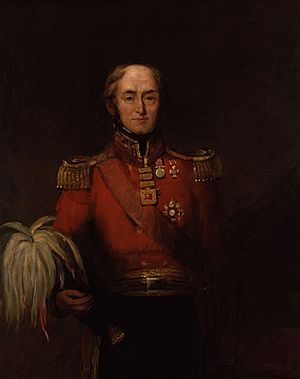Governors of British Ceylon facts for kids
Quick facts for kids Governor of Ceylon |
|
|---|---|

Flag of Governor of Ceylon
|
|
| Style | His Excellency |
| Residence | Government House |
| Appointer | Monarch of the United Kingdom |
| Precursor | Governor of Ceylon |
| Formation | August 1795 |
| First holder | Patrick Alexander Agnew as Military Governor |
| Final holder | Henry Monck-Mason Moore |
| Abolished | 4 February 1948 |
| Succession | Governor-General of Ceylon |
The Governor of Ceylon was a very important person in British Ceylon (which is now Sri Lanka). From 1795 to 1948, the Governor was the main representative of the British King or Queen. They were like the chief boss of the British government in Ceylon.
The Governor was in charge of the main government council and also the leader of the British armed forces in Ceylon. They reported directly to the British government office that handled colonies.
When Ceylon became an independent country in 1948, the role of Governor changed. It was replaced by the Governor-General. This new role still represented the British monarch, but Ceylon was now a self-governing country. Later, in 1972, Sri Lanka became a republic, and the Governor-General was replaced by the President.
Contents
How Governors Were Chosen
The British King or Queen chose the Governor of Ceylon. They usually made this decision based on advice from the British Prime Minister and the Secretary of State for the Colonies. This meant the Governor had a lot of power in Ceylon throughout the time it was under British rule.
What Did Governors Do?
The Governor was the head of the entire government in Ceylon. At first, their power was only over the coastal areas. But after an agreement called the Kandyan Convention in 1815, their power grew to include the Kingdom of Kandy's provinces too.
The Governor had almost complete power on the island. This power came from the old Dutch governors and the King of Kandy. They answered to the British Secretary of State for the Colonies. Later, a set of changes called the Colebrooke Reforms clearly stated that the Governor was the "representative of the Monarch who rules over the Parliament of the United Kingdom." These reforms also created the first steps towards a local law-making body.
The Governor was also the commander-in-chief of the British forces in Ceylon. This means they were the top military leader. However, during World War II, a special Admiral named Geoffrey Layton was given even more power than the Governor to lead the forces.
Ceremonial Duties
Governors also had some special traditional duties. For example, every November, the Governor would receive a special payment from the Sultan of Maldives. This was a long-standing tradition. The Governor was also the head (called ex-officio Chancellor) of the University of Ceylon and a supporter of the Royal College Colombo.
Working with Councils
After the Colebrooke Reforms, two important councils were set up: the Executive Council of Ceylon and the Legislative Council of Ceylon. The Governor was the leader of both these councils. In 1931, the Legislative Council was replaced by the State Council of Ceylon. This new council gave the people of Ceylon more say in their own government.
How They Were Addressed
The official title for the position was "Governor of Ceylon." People would address the Governor as Excellency and say "Your Excellency." The Governor was considered the most important government official in Ceylon. This way of addressing the head of state is still used for the President of Sri Lanka today.
Special Perks and Places
Where Governors Lived
The main home and office for the Governor was King's House in Colombo. They also had a second home called the King's Pavilion in Kandy. For holidays, the Governor would go to Queen's Cottage in the cool hill station of Nuwara Eliya.
Governor's Guards
The Governor had a special Governor's Bodyguard. These were mounted guards who would provide a ceremonial escort for the Governor at important events. There was also a traditional local regiment called the Lascoreens. They would provide a ceremonial guard for special occasions, like receiving the Maldivian tribute or during royal visits.
Who Helped the Governor?
The Governor's office was located at King's House and had a team of permanent staff. This team included the secretary to the Governor, a private secretary, an aide-de-camp (a personal assistant), the Maha Mudaliyar (a chief native official), an office assistant, and other support staff.
List of Ceylon's Governors
| No. | Portrait | Name (Birth–Death) |
Time in Office | British Monarch | Ref. | ||
|---|---|---|---|---|---|---|---|
| Started | Ended | Length of Time | |||||
| Military Governors (1795–1798) | |||||||
| 1 | Patrick Alexander Agnew (1765–1813) (in Trincomalee) |
August 1795 | 1 March 1796 | 7 months | George III | ||
| 2 | 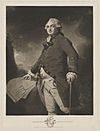 |
James Stuart (1741–1815) |
1 March 1796 | 1 January 1797 | 306 days | George III | |
| 3 | Welbore Ellis Doyle (1758–1797) |
1 January 1797 | 2 July 1797 | 182 days | George III | ||
| 4 | Peter Bonnevaux (c. 1752–1797) |
2 July 1797 | 12 July 1797 † | 10 days | George III | ||
| 5 | Pierre Frédéric de Meuron (1788–1813) |
12 July 1797 | 12 October 1798 | 1 year, 92 days | George III | ||
| Resident and Superintendent (1796–1798) | |||||||
| 1 | Robert Andrews (1763–1821) |
12 February 1796 | 12 October 1798 | 2 years, 242 days | George III | ||
| Governors (1798–1948) | |||||||
| 1 | 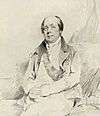 |
Frederick North (1766–1827) |
12 October 1798 | 19 July 1805 | 6 years, 280 days | George III | |
| 2 | 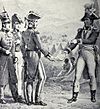 |
Thomas Maitland (1760–1824) |
19 July 1805 | 19 March 1811 | 5 years, 243 days | George III | |
| John Wilson (1780–1856) Acting |
19 March 1811 | 11 March 1812 | 358 days | George III | |||
| 3 |  |
Robert Brownrigg (1759–1833) |
11 March 1812 | 1 February 1820 | 7 years, 327 days | George III | |
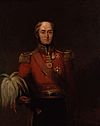 |
Edward Barnes (1776–1838) Acting |
1 February 1820 | 2 February 1822 | 2 years, 1 day | George III George IV |
||
| 4 |  |
Edward Paget (1775–1849) |
2 February 1822 | 6 November 1822 | 277 days | George IV | |
| James Campbell (c. 1773–1835) Acting |
6 November 1822 | 18 January 1824 | 1 year, 73 days | George IV | |||
| 5 |  |
Edward Barnes (1776–1838) |
18 January 1824 | 13 October 1831 | 7 years, 268 days | George IV William IV |
|
| John Wilson (1780–1856) Acting |
13 October 1831 | 23 October 1831 | 10 days | William IV | |||
| 6 |  |
Robert Wilmot-Horton (1784–1841) |
23 October 1831 | 7 November 1837 | 6 years, 15 days | William IV Queen Victoria |
|
| 7 |  |
James Alexander Stewart-Mackenzie (1784–1843) |
7 November 1837 | 15 April 1841 | 3 years, 159 days | Queen Victoria | |
| 8 |  |
Colin Campbell (1776–1847) |
15 April 1841 | 19 April 1847 | 6 years, 4 days | Queen Victoria | |
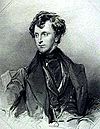 |
James Emerson Tennent (1804–1869) Acting |
19 April 1847 | 29 May 1847 | 40 days | Queen Victoria | ||
| 9 | The Viscount Torrington (1812–1884) |
29 May 1847 | 18 October 1850 | 3 years, 142 days | Queen Victoria | ||
| Charles Justin MacCarthy (1811–1864) Acting |
18 October 1850 | 27 November 1850 | 40 days | Queen Victoria | |||
| 10 | George William Anderson (1791–1857) |
27 November 1850 | 18 January 1855 | 4 years, 52 days | Queen Victoria | ||
| Charles Justin MacCarthy (1811–1864) Acting |
18 January 1855 | 11 May 1855 | 113 days | Queen Victoria | |||
| 11 |  |
Henry George Ward (1797–1860) |
11 May 1855 | 30 June 1860 | 5 years, 50 days | Queen Victoria | |
| Henry Frederick Lockyer (1797–1860) Acting |
30 June 1860 | 30 July 1860 | 30 days | Queen Victoria | |||
| Charles Edmund Wilkinson (1807–1870) Acting |
30 July 1860 | 22 October 1860 | 84 days | Queen Victoria | |||
| 12 | Charles Justin MacCarthy (1811–1864) |
22 October 1860 | 1 December 1863 | 3 years, 40 days | Queen Victoria | ||
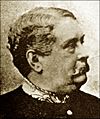 |
Terence O'Brien (1830–1903) Acting |
1 December 1863 | 21 March 1865 | 1 year, 110 days | Queen Victoria | ||
 |
Hercules Robinson (1824–1897) Acting |
21 March 1865 | 16 May 1865 | 56 days | Queen Victoria | ||
| 13 |  |
Hercules Robinson (1824–1897) |
16 May 1865 | 4 January 1872 | 6 years, 233 days | Queen Victoria | |
| Henry Turner Irving (1833–1923) Acting |
4 January 1872 | 4 March 1872 | 60 days | Queen Victoria | |||
| 14 |  |
William Henry Gregory (1817–1892) |
4 March 1872 | 4 September 1877 | 5 years, 184 days | Queen Victoria | |
| 15 |  |
James Robert Longden (1827–1891) |
4 September 1877 | 10 July 1883 | 5 years, 309 days | Queen Victoria | |
| John Douglas (1835–1885) Acting |
10 July 1883 | 3 December 1883 | 146 days | Queen Victoria | |||
| 16 | 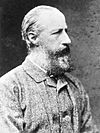 |
Arthur Hamilton-Gordon (1829–1912) |
3 December 1883 | 28 May 1890 | 6 years, 176 days | Queen Victoria | |
| 17 | 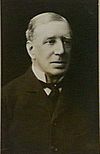 |
Arthur Elibank Havelock (1844–1908) |
28 May 1890 | 24 October 1895 | 5 years, 149 days | Queen Victoria | |
| Edward Noël Walker (1842–1908) Acting |
24 October 1895 | 10 February 1896 | 109 days | Queen Victoria | |||
| 18 |  |
Joseph West Ridgeway (1844–1930) |
10 February 1896 | 19 November 1903 | 7 years, 282 days | Queen Victoria Edward VII |
|
| Sir Everard im Thurn (1852–1932) Acting |
19 November 1903 | 3 December 1903 | 14 days | Edward VII | |||
| 19 |  |
Henry Arthur Blake (1840–1918) |
3 December 1903 | 11 July 1907 | 3 years, 220 days | Edward VII | |
 |
Hugh Clifford (1866–1941) Acting |
11 July 1907 | 24 August 1907 | 44 days | Edward VII | ||
| 20 |  |
Henry Edward McCallum (1852–1919) |
24 August 1907 | 24 January 1913 | 5 years, 153 days | Edward VII George V |
|
 |
Reginald Edward Stubbs (1876–1947) Acting |
24 January 1913 | 18 October 1913 | 267 days | George V | ||
| 21 | 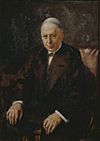 |
Robert Chalmers (1858–1938) |
18 October 1913 | 4 December 1915 | 2 years, 47 days | George V | |
 |
Reginald Edward Stubbs (1876–1947) Acting |
4 December 1915 | 15 April 1916 | 133 days | George V | ||
| 22 | 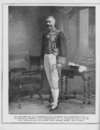 |
John Anderson (1858–1918) |
15 April 1916 | 24 March 1918 † | 1 year, 343 days | George V | |
 |
Reginald Edward Stubbs (1876–1947) Acting |
24 March 1918 | 10 September 1918 | 170 days | George V | ||
| 23 |  |
William Henry Manning (1863–1932) |
10 September 1918 | 1 April 1925 | 6 years, 203 days | George V | |
 |
Cecil Clementi (1875–1947) Acting |
1 April 1925 | 18 October 1925 | 200 days | George V | ||
| Edward Bruce Alexander (1872–1955) Acting |
18 October 1925 | 30 November 1925 | 43 days | George V | |||
| 24 |  |
Hugh Clifford (1866–1941) |
30 November 1925 | June 1927 | 1 year, 6 months | George V | |
 |
Arthur George Murchison Fletcher (1878–1954) Acting |
June 1927 | 20 August 1928 | 1 year, 2 months | George V | ||
| 25 | 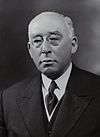 |
Herbert Stanley (1872–1955) |
20 August 1928 | 11 February 1931 | 2 years, 175 days | George V | |
| Bernard Henry Bourdillon (1883–1948) Acting |
11 February 1931 | 11 April 1931 | 59 days | George V | |||
| 26 | Graeme Thomson (1875–1933) |
11 April 1931 | 20 September 1933 | 2 years, 162 days | George V | ||
| Graeme Tyrrell (1876–1964) Acting |
20 September 1933 | 23 December 1933 | 94 days | George V | |||
| 27 |  |
Reginald Edward Stubbs (1876–1947) |
23 December 1933 | 30 June 1937 | 3 years, 189 days | George V Edward VIII George VI |
|
| Maxwell MacLagan Wedderburn (1883–1953) Acting |
30 June 1937 | 16 October 1937 | 108 days | George VI | |||
| 28 | 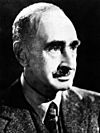 |
Andrew Caldecott (1884–1951) |
16 October 1937 | 19 September 1944 | 6 years, 339 days | George VI | |
| 29 | Henry Monck-Mason Moore (1887–1964) |
19 September 1944 | 4 February 1948 | 3 years, 138 days | George VI | ||
See Also
- Dutch governors of Zeylan
- Governor-General of Ceylon
- History of Sri Lanka


